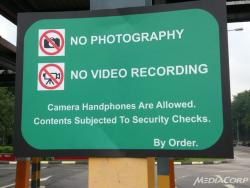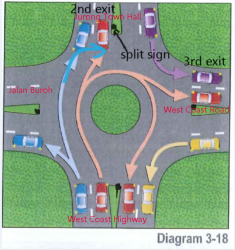Search the Community
Showing results for tags 'rules'.
-
Hey guys, been a long time since I've been active here, but you know what? I've been brewing a car taxation plan in the back of my mind for months, just never sat down to write it out. We all know the legendary COE and many of us by now have already said it needs a do-over, even the polimakers are starting to say something about giving it a do-over. But always without reconsidering what classifying cars should be. Since I'm never gonna get into the "job" of public service, here's my comprehensive... uh... suggestion? You wanna tl;dr? Fine, I'll leave one at the end. Total COE Restructure Let's start with the headliner, which is always our iconic certificates (we know our car don't last forever, because of COE). Since its inception, the COE has, for consumers, been fundamentally separated into categories A and B, which for now I will focus on. As a reminder; Category A represents passenger vehicles up to 1,600cc or 130hp (97kW), and Category B is just... anything over that, making the assumption that B category vehicles are inherently larger or more luxurious vehicles. Now, the main proclaimed goal of COE is managing the vehicle population, and ostensibly managing road congestion by limiting the volume of cars. With that stated intent in mind, who agrees that a car's power output and displacement has any real bearing on its ability to create congestion? Would ten buses cause more congestion than ten Golf Rs in the same stretch of road? Would ten Cat B Golf Rs cause more congestion than ten Cat A Golf (....what's it called now? 90TSI? Scrap that too) Ten buses would definitely block more road than ten Golfs, EA888 or not, but of course the counterpoint is that ten buses holds many times more people than ten Golfs, or even the equivalent number of Golfs in terms of length. Redefining the Categories... on Size. So my suggestion is, actually, quite simple - let's redefine COE categories based on the physical size of vehicles. This is easily accessible information, I cannot think of any car that you cannot get dimension information for, and if you really can't, there's nothing stopping the homologation department from breaking out a tape measure. I don't think I want to arbitrarily define numbers I think are suitable for separating Category A and B at the moment, but... If we consider trends, I'd say a comfortable position for Category A is 4,700mm long and below, as most "compact" sedans today remain in the ~4,650mm long range, and plenty of small hatchbacks are well low that. (Isn't it ridiculous that a 2020 G20 3-series now is longer than the 1994 Mazda Capella/626?) Anyway, keeping things simple would be using length, because that is usually what really determines how much space a car needs on a road. I consider 4.65m a median of sorts, 4.7~5m the range locals traditionally consider a large family car, and that anything over 5m, nobody is going to call that small. Cars under 4.4m are typically the 'small' ones today, you'd be hard pressed to still find something under 4m. Again, keeping it simple, if we were to retain a binary classification, Category A could be below 4.7m and Category B anything longer than that. Alternatively, we can expand it a little to include overall footprint, by taking length x width of the car, but given that lanes are lanes and people aren't supposed to be driving across two lanes, it occurred to me while writing this that that's really a little unnecessary, plus it makes it a tad harder to account for capacities. Long story short though, is let's just redefine COE categories based on size/length of a car, not its engine power/displacement, which no longer has any real direct bearing on its state of luxury, economy, efficiency, or, most importantly, physical size. COE Incentive for Family Vehicles With Singapore's infamously small land area, there's a consistent push for car sharing, reducing the number of individual vehicles, increasing the person per vehicle, and so on, but there's also a consistent and very unhappy demographic of families that for practical purposes need a vehicle on demand for themselves to manage their children. Yes, you can bring your kids on a bus, but with a stroller and all the like, managing a potentially rambunctious or easily upset child whilst carrying a baby or other nightmare scenarios, you can imagine all of that, and there are plenty of little articles about why families scrounge everything they can to afford a car even with the wide availability of ride hailing and our celebrated public transport. (Simply don't Go aside) By their nature, a sportscar, two seaters especially, have less capacity for transporting and are traditionally the domain of luxury, and rarely sit in the lower price classes. But at the same time, a tiny convertible like a Daihatsu Copen may be really just a recreational vehicle for two, but it takes up virtually no road at all compared to a Toyota Fortuner. With this in mind, I'd propose that any vehicle with less than five seats incur a COE multiplier - it should cost more to own a vehicle of this type, but it should still be in accordance with its size. As such, a 7-seater, which has the capacity to hold more people, and is often a choice made to accommodate a growing family, should be incentivized - it should have a COE reduction. Of course, it's always going to be true that cars spend a lot of time with less than their entire capacity filled, but there's really not a whole lot we can do to mitigate that. But the fact is that placing a Polo GTI in the same taxation category as a Nissan X-Trail, or a bus-lane demanding Aventador, is antithetical to the system's intent. Many of the times a family that really could do with a vehicle are the ones who are suffering the most from sky high COEs, whereas we know by now those who can afford their fifth Porsche don't really care too much about an extra $20k. Short version: COE classification based on size of the car COE Penalty for impractical sports vehicles with less usable seats COE benefit for practical family vehicles with more usable seats But hold on, why again do we need to fuss so much? The COE system has been unfairly cruel to the folks who can arguably need vehicles the most, and at real worst an annoyance to rental/fleet companies and affluent individuals with the means to own multiple cars. There needs to be a real restructuring to allow more cars to be used by these young families who struggle in many ways because they see cars as a necessity even with all their 'alternatives', while taking more from those who are ordering their third Cayman. Size is the thing that implicates congestion potential the most, and instead encouraging a population of many small cars, two Jazzes can hold five people (even if in relative discomfort) each compared to four in a standard S-class, while taking up only marginally more effective space on the road. A Prius makes barely over 130hp and gets shoved into Cat B, but who's gonna say a Prius is appreciably more luxury than a Corolla Altis? Power and displacement has long been detached from a car's class, but physically larger cars often really do be more inefficient and luxurious - compare, say, again, an Audi A1 to an Audi A6. You can have both with the 1.4TFSI engine, but the A4 is noticeably better built on the inside. Even accounting for the tune increase, the Cat B A4 1.4 is much less efficient because it weighs more. Then you have the obviously ridiculous Mercedes Benz MFA180 spec, (A180, B180, CLA180, etc.), which previously came with the M270 "RED" engine, RED standing for reduced - that brought the 1.6L engine from MFA200 specs of around 155hp to the Category A 130hp to allow the premium brand to sell Category A vehicles here. The thing that's widely ignored is that the Cat A "RED" engine is not only less powerful, but less efficient, both in the claimed numbers and in real use. A more recent example is the 2023 Honda Civic Turbo's local exclusive Cat A 129hp tune, a substantial reduction from the engine's normal 180hp variant, without being appreciably more efficient, and even before that KM is one of just 8 territories where the ancient 1.6L engine was recycled one more time for the 2017 Civic tenth gen. Many hybrids produce over 130hp but are more efficient, but automatically get discouraged by Cat B. I'll reiterate this point, but to summarise this section; The current COE structure is outdated, nonsensical even at its inception and does not keep cars affordable for lower income families who need them to better manage their children in their busy lives, an increasingly vocal demographic that we weigh all our hopes on. Managing one kid and one stroller on Bus MRT Walk is tough enough, but our population won't grow when it's so hard to care for your children. Plus, the absurd choice of metrics of power output and displacement to classify vehicles discourages innovation in powerplants that we seriously need for reducing the gasoline footprint, resulting in a larger population of cars with outdated engines. The World's Most Expensive Cars... with the lowest specifications We already know we have the most expensive cars in the world, but have you noticed we have the lowest specced cars in the world too? Why? ARF. The ARF taxation is why you pay for your car's value, at minimum, twice over - a car's ARF, before "incentives", is 100% of a vehicle's OMV, and gets worse from there. As such, higher spec vehicles incurring higher OMV incur higher ARF. This of course makes sense from the standpoint of taxing luxury, but it also means that dealers, with their immense margins, are not willing to bring in vehicles that are well equipped. Consider Citroën under C&C, which has for whatever reason decided that the storied French nameplate should be a lower cost brand. Their latest lineups have been exclusively brought in with pretty barebone specifications, lacking even electric seat options. "Premium" Automobiles has been perhaps the most depressing offender to me personally, with their hypocritical name - their cars routinely lack any manner of technology that befits Audi's slogan, just a few of the most obviously visible ones for "wow" factor - Virtual Cockpit for example was hyped early on. Due to the expensive taxation via ARF, batch homologation and lack of flexibility in bringing in cars of individually customized equipment levels, the dealers are largely discouraged from importing vehicles with full equipment lists - as someone who personally wants a car with all the trimmings, this has been a long running frustration of mine. Audi's presense active safety/assistance suite is available on...... I don't know, which? Only the A8? The Q8 doesn't even have the sunglasses compartment and lined interior visors, for crying out loud. You can get all of those on... a Skoda Octavia. For far less. Why do I care so much about these features? Because many of these are safety technologies that are being exorcised from premium cars, safety technologies I was one of the earliest to adopt. I've a 2015 model year vehicle featuring adaptive cruise, blind spot warnings and lane keeping assist, four years before these features have reached Singapore's mainstream. And you still struggle to get these as standard on an Audi, a BMW, or a Mercedes. Even though they're widely available from mainstream brands now (Peugeot, Toyota SafetySense, Honda Sensing, Subaru Eyesight, Mazda has it too, so on), the premium marques don't offer adaptive cruise or their full safety suites, at best a cut down variant. PML BMWs have begun to have Driving Assistant across all cars, but this is limited to camera based front active city braking, blind spot warning and lane keeping, you are still denied RADAR based active cruise. And the PA imported Audi S3 in 2019 did not come with a reverse camera. I want an upgrade, not a downgrade. There needs to be more emphasis on safety technologies and not "wow" technologies, and dealers need to start offering smaller vehicles with premium equipment lists. What's a solution? Obviously this problem also lies with dealers and consumer mindsets, the desires always to cut corners on our already expensive cars, and I think it's fine that we should have to pay more for options like Virtual Cockpit, or Alcantara trim. But I think we need to stop compromising on safety technology. This is to me, non-negotiable at this point. In other countries across the world, many marques have begun offering these features as standard. Hold on, you might say, why does it matter so much? I don't need this stuff, I drive fine. So in the eight years I've been driving my beloved Mondeo, I've used Adaptive Cruise nearly every journey... But I've had the emergency brake intervention trigger only twice. I was sleepy. You will never be driving in 100% perfect condition every day of your life. We already say we've got some of the worst drivers, the most kiasu, the most impolite, and my Mondeo isn't shy about warning me that I'm less than two seconds of following distance to the car in front (I have sensitivity on high for pedestrian detection), but what's to say we can't reduce the number of accidents with these features? Side anecdote, I'm still baffled by how seven cars can have a chain collision in the middle of the highway, an empty highway during Circuit Breaker, in broad, clear daylight. What kind of absurd scenario causes that? Yes, it'll make the cars more expensive, as these aren't without a cost, but can you imagine how much less we'd lose in time and money if we had virtually zero accidents across our roads? Less congestion, less time wasted, less fuel burnt in traffic jams, no need to waste TP resources dispatching to manage the scene, less money spent on EMAS recovery. Less money lost on people idling in a jam. So I propose that there be a discount incentive for safety technology equipment on cars. Say, a $500 incentive for forward collision detection. $500 off for Blind Spot warning. $250 off for adaptive headlights. $250 off for seatbelt airbags (my Mondeo didn't come with them, sadly) Something like that. I also think, really, we should consider making it possible to fine someone extra if they were involved in an accident while driving with that feature disabled (if equipped, obviously), or at least if I were an insurance officer I would probably increase the person's excess for that incident. The legislation has long been discouraging advanced technologies and our cars have been routinely some of the worst equipped in the world, while the COE system somehow results in some of the most inefficient powerplants reaching us. You might have noticed I didn't specify a discount on ARF, which has long been the typical means of providing incentives, notably through the EV early adopters incentive and the CEVS rebate. That's because anyone who knows ARF knows that ARF is what determines your PARF rebate, more commonly known as scrap value. The PARF rebate depreciates linearly from 100% ARF to 50% over the ten years of the car's original COE, which means that every $1,000 discount on ARF is really a $500 loss to your PARF rebate. Which is why cars, particularly EVs, that have high CEVS rebates, have spectacularly poor depreciation rates. (See, for example, SGCM's BMW iX3 vs X3 faceoff) Incentives need to be serious, and to be really serious about being an incentive they need to not take from the consumer's back pocket. I also suggest we start incentivizing real hybrids, and plug-in hybrids. In a meaningful way. Tons of dealers have started offering mild hybrids, which just include a small booster battery that helps start from a standstill. These do not confer any real efficiency benefit overall. Plug-in Hybrids are expensive now, but deserve to have more penetration. I asked many a dealer, why are you not offering PHEVs? The answer? Nobody wants them. My response; nobody I've asked knows they exist. Dear dealers, you make the markets, not the consumers, in Singapore. Do us better. I suddenly got really sleepy at this point, so I'll maybe elaborate in another post. All the essential info's above. But what else do I think I want to throw in? The diesel duty raise. That was dumb - commercial vehicles are the most frequent user of diesel, and increasing their cost to run has undoubtedly lead to delivery and freight costs rising and reaching the consumer. Rental companies propping up COEs with their indifference to high COE prices? Supposedly doesn't happen, but I doubt that. Almost definitely has to be happening, and then those cheap grade low spec cars get dumped on the preowned market exacerbating the problems I described. Not to mention that expensive COEs lead to more use of rental vehicles, which the rental companies can price up to recover their costs...? Makes for a self-sustaining cycle. Anyway, as promised, tl;dr; COE current system of displacement/power is dumb (and was dumb in 1990), change classification system to be based on length. Discount COE for more than 5 seats, penalty for less than 5 seats Revise ARF/add incentives for safety technology to encourage safer cars Revise incentives to encourage more efficient gasoline cars, not just EVs, because EVs are still not ready
- 41 replies
-
- 3
-

-
- coe
- car markets
-
(and 1 more)
Tagged with:
-

Newly recommended road cycling rules — Do they actually matter?
thatJDMahboy posted a blog entry in MyAutoBlog
The Review On 1 October 2021, a government panel, Active Mobility Advisory Panel (AMAP), has produced a set of recommendations to review regulations to enhance road safety. The recommendations consist of the following rules and guidelines: To continue allowing cyclists to ride abreast in a maximum of 2 on roads with two or more lanes. Introduce a rule for on-road cycling groups, for them to limit their group length to 5 bicycles. Essentially, this means a limit of five cyclists in a single file or ten cyclists when riding abreast. Introduce a guideline to ensure a safe distance of 2 lamp posts (30 metres) between riding groups. Introduce a guideline in the Highway Code and driving test handbooks that require motorists to have a minimum passing distance of 1.5 metres when passing cyclists. Highly encourage cyclists to sign up for third-party liability insurance. When involved in an accident, third-party insurance will compensate for victims and protect cyclists from potentially expensive claims. Source: https://www.lta.gov.sg/content/dam/ltagov/getting_around/active_mobility/rules_public_education/rules_code_of_conduct/pdf/2021-10_amap_report_for_the_review_of_on-road_safety.pdf My Two Cents After reading the recommended rules and guidelines, certain thoughts came to my mind: For recommendations 1 – 3, is there a point behind it? After all, what is the point if cyclists don’t adhere to these recommendations? Unless they are caught in the act of flouting these rules and guidelines, matters will remain the status quo. Besides, recommendations 1 – 3 will only be effective when proper enforcement is present. And this, unfortunately, is a hard nut to crack. Recommendation 4 will be only and most effective when implemented – but why? Well, it is pretty simple. It is easier to take enforcement actions against motorists than cyclists, as motorists must be licensed and officially registered with government bodies. Hence, it makes motorists more accountable for any actions committed by them. Lastly, recommendation 5 is the most perplexing recommendation of them all. Considering a significant number of citizens have no insurance coverage, the tendency to take up third-party liability insurance for cycling is going to be pretty damn low too. Conclusion Nothing spells ineffectiveness more than this proposed set of recommendations, which practically solves none of the issues at hand. Instead, the proposed recommendation aims to tackle every other matter, except that one crucial matter – Holding cyclists accountable for their actions. Netizens' Comments This basically summarises all the issues at hand. --- Thinking of selling your car? sgCarMart Quotz guarantees the highest selling price for your car. We’ll even give you $100 cash if you find a better offer elsewhere! Get a free quote to find out how much your car is worth today!- 5 comments
-
Must be sgrean and 30+ liao https://www.straitstimes.com/singapore/transport/private-hire-drivers-must-be-citizens-at-least-30-years-old-lta
-
https://www.straitstimes.com/singapore/transport/lta-to-streamline-rules-governing-taxis-private-hire-cars SINGAPORE - A long-awaited move to impose tighter regulations on private-hire operators is finally on the way. The Land Transport Authority said on Thursday (Jan 24) that it is proposing to license all street-hail and ride-hail operators, "as they provide the same fundamental service of transporting commuters from point to point". This is a stark change from the time when these newcomers arrived six years ago, when the authority viewed them as "tech companies" and not transport providers. The LTA said on Thursday that regulations will also cover companies which provide pre-booked chauffeured services. Observers expect changes to harmonise regulations governing taxis and private-hire players. The LTA noted that the change will be "different from today's regulatory framework, where one set of regulations apply to taxi operators which provide both street-hail and ride-hail services, and there are no uniform regulations that apply to operators that purely provide ride-hail services". It said a new regulatory framework "will replace the existing Taxi Service Operator Licence and Third Party Booking Registration Certificate". The LTA is also looking at ways to improve safety, but gave no details on how it intends to do this. Preliminary statistics from motor insurers indicate road accident rates have crept up since the arrival of private-hire firms. On the commercial side, the new regulatory framework will allow drivers freedom to drive for whomever they wish. The framework will "allow LTA to prohibit all operators from having driver exclusivity arrangements", the authority added. The Straits Times understands the Public Transport Council will eventually see that both taxi and private-hire companies adhere to the new regulations. When asked, the PTC said it was more appropriate for the LTA to reply. An LTA spokesman would not comment, merely saying "more details on the review will be made available when ready". The LTA is seeking public feedback on the proposed changes. Those who wish to have their say can do so via http://bit.ly/PCDP2P, or e-mail [email protected] by Feb 21.
-
Don't worry, we are not making it compulsory for all to adopt a dog, or crowdfund to build a bridge, but just something very simple, and doable by most, if not all MCFers. Of late, it have came to our attention that makan thread has been showcasing non-edible stuff, hobby thread slowly transforming into an advertising platform, piak piak and vulgarities becoming a norm in almost every other thread, and even cat fight going on in a thread created for pet lovers. You know what (and who) I am referring to... I would like to remind you that MCF is an open forum for members from all walk of life to share their knowledge / experience, raise meaningful queries, and be engaged in healthy discussions. Rules are to be followed, so that every members can have an enjoyable time with MCF. Thus, I urge all of you to revisit the thread below, which was created by the admin some 10 years ago, to understand what are the do's and don'ts in MCF. Let help to make this forum we loved, a better place to be for all new and existing forumers. Thanks in advance for your understanding and look forward to your fullest cooperation. Forum Rules & Guidelines
- 211 replies
-
- 42
-

-
hmmmmmmm sth brewing? @tianmo https://www.channelnewsasia.com/news/singapore/a-level-results-students-apply-polytechnic-skip-semester-courses-11245456 Singapore A-Level results out next Friday; graduates who opt for polytechnics can skip semester image: data:image/gif;base64,R0lGODlhAQABAAAAACH5BAEKAAEALAAAAAABAAEAAAICTAEAOw== File photo of students at Singapore Polytechnic. (Photo: TODAY) 15 Feb 2019 11:22AM (Updated: 15 Feb 2019 12:21PM) Share this content BookmarkSINGAPORE: The results of the GCE A-Level examinations will be released next Friday (Feb 22), the Ministry of Education (MOE) said on Friday. Students may collect their results from their schools from 2.30pm on that day, while private candidates will be notified of their results by post. The ministry also announced on Friday that A-Level graduates who choose to further their studies at polytechnics can now skip the first semester for more than 100 courses. Currently, most A-Level graduates apply for and enrol in a polytechnic only one year after getting their results. This is because most polytechnic admissions exercises would have closed by the time the A-Level results are announced. READ: O-Level grades will no longer form part of admission scores for Poly grads applying to NUS, NTU from 2020From Academic Year 2019, eligible A-Level graduates can be admitted directly to Year 1 Semester 2 each October for 110 polytechnic courses, up from the current nine. This will reduce their polytechnic course from three years to two-and-a-half years. Advertisement The 110 courses make up about half the diploma courses offered by the five polytechnics, and span several course clusters. “A-Level graduates who are not enlisting in National Service will be able to enter the polytechnics in the same year that they receive their A-Level results. As a result, this group will be able to graduate one year earlier,” MOE said. image: https://www.channelnewsasia.com/image/11245562/0x0/819/511/72007b68a9c769b719a86efa69bb462d/Df/polytechnic-admission-for-a-level-infographic.jpg Source: Ministry of Education Interested A-Level graduates will be able to apply to the polytechnics directly for these 110 courses in mid-August, for matriculation at the start of AY2019 Semester 2 in October this year. More details will be available on the respective polytechnics’ websites by March 2019. 200 A-LEVEL GRADUATES ENROL IN POLYTECHNICS ANNUALLY Places for A-Level graduates will be separately catered for, and there will be no impact on the number of places for O-Level graduates or ITE graduates, MOE said. "The number of places for A-Level graduates will depend on the demand from and quality of applicants, and hence will vary from year to year," it said. According to the ministry, about 200 A-Level graduates are admitted each year to the five local polytechnics – Nanyang, Ngee Ann, Republic, Singapore and Temasek. "These are students who are keen to pursue an applied pathway at the polytechnics, that matches their area of interest or aptitude," it said, adding that the number includes both A-Level graduates who have applied and those who did not apply to the local universities. READ: Better pay, job prospects for polytechnic graduates in 2018: SurveyFor most polytechnic courses, A-Level graduates would need passes in two relevant H2 subjects to receive module exemptions. These requirements may differ for specific courses. Courses which offer module exemption have "sufficient commonalities" between the A-Level and polytechnic curriculums, MOE said. The exemptions are mostly for polytechnic foundational modules, and students would have covered similar curriculum in preparing for the A-Levels. For example, A-Level graduates in Ngee Ann Polytechnic’s Diploma in Information Technology may be exempted from the modules on Computing Mathematics and Programming 1 if they have passed H2 Computing or Computing Science, and H2 Mathematics. Similarly, A-Level graduates in Temasek Polytechnic’s Common Engineering Programme may be exempted from the modules on Engineering Mathematics 1, Engineering Physics, Digital Fundamentals 1 and Circuit Analysis if they have passed H2 Mathematics and H2 Physics. Read more at https://www.channelnewsasia.com/news/singapore/a-level-results-students-apply-polytechnic-skip-semester-courses-11245456
-
its now 1st car claim 2nd, 2nd claim 3rd and so forth, please drive safe and keep safe distance. no more last pay all.
-
Ridiculous office rules revealed LAURA FRANSEN HUMAN RESOURCES Sep 18, 2017 Source: http://www.asiaone.com/business/ridiculous-office-rules-revealed Does your company have any silly or unnecessary rules in place? While management will probably say no - after all, all rules are implemented for a reason - employees may feel differently. In a recent workplace study, 36.8 per cent of respondents said their workplace has "ridiculous" rules. The survey by UK job site CV-Library asked 1,000 UK workers whether their employer had any silly or unnecessary rules in place. If the fact that over a third of employees think their company has stupid rules doesn't motivate you to review your policies, perhaps this will: 22.5 per cent said that workplaces with ridiculous rules can't be trusted. When it comes to the ridiculous rules in question, according to the survey results they broadly fall into five categories: Bathroom breaks: Respondents reported they either had a strict time frame in which to go to the toilet (3 minutes), had to ask before using the toilet facilities, or were even searched before going to the toilet. Dress code: Some respondents reported they had to wear particular coloured clothes to match the business, and women weren't allowed to wear trousers. One individual even said that they were sent home for not dressing down. Talking: Some employees stated that they weren't allowed to talk out loud outside of the staff room, while others said that they weren't allowed to say "hello" to a customer, only "good morning", or "good afternoon". Time keeping: One company deducts 15 minutes worth of pay if an employee is 2 minutes late. Another won't allow staff to travel further than 20 metres away from the building during lunch in case they're back late. Drinks: Some workplaces won't allow their staff to drink water and another will not let workers carry drinks up and down the stairs. One company won't let employees have drinks on their desk in case they get spilt. Commenting on the results, Lee Biggins, founder and managing director of CV-Library, said: "Every workplace needs rules: otherwise you'd simply never get things done! That said it's clear that many of the rules highlighted in our research are just ridiculous." He added: "Employees want to feel trusted and while one workplace can differ massively to another, you have to treat your staff like adults - especially when it comes to being allowed to drink water and going to the toilet!" A final finding from the survey provides another reason for ensuring any office rule makes sense to staff. Over half of respondents (57.2 per cent) said that if they feel a rule is silly, they'll simply disobey it. My company also quite kecoh one. Quite stringent on dress code and such.
-
hello, any fans of the Japanese movie - battle royale? i was introduced by a friend there's actually this game call rules of survival that stimulate the game play as were in the movie - battle royale. the game can be found in android or apple store. probably we can do a team play and have fun together.
-
More drivers have been caught by the Traffic Police for not putting on seat belts or appropriate restraints for children travelling in vehicles. The number has doubled in the first half of this year, compared to the same period last year. This follows changes to seat belt rules in the beginning of the year. Since January, anyone below the height of 1.35 metres needs to be properly secured - either with seat belts, child restraints or booster seat cushions - when travelling in a car. Previously, the seat belt rule applies to children aged eight and below. Police say in the first half of the year, 490 drivers were caught for failing to belt up their young passengers, compared to 220 in the same period last year. Parents say they find it challenging to belt up their children. "You need to offer some incentives, sweets and all sorts of funny things, all the distractions. It actually has its practical issues." "The kids find it uncomfortable but we try to force it onto them. Otherwise, we just don't move off because it is important for them, for their safety." "Of course as a parent, we just need to tell them that this is for their safety. If I'm struggling, if they refuse to put the seat belt on, I just use force to buckle them up. After that, they just cry a little, then it's ok." One psychologist says it's understandable that kids do not like to be restrained, but parents need to think safety first and not give in to their children. Dr Qu Li, Assistant Professor, Division of Psychology, Nanyang Technological University, said: "Parents need to know more about how to deal with the situation and more about safety issues. For example, in Singapore, once in a while, we will see parents putting young children at the front passenger seat, which is not safe at all. Some parents may think this seat is safe, there is an air bag to protect the children. For younger children who are so short, when the air bags blow open, it will completely cover their face. They can't breath. They will die." She said adults need to get creative when teaching kids the importance of belting up. Dr Qu said: "If we just say, bring a textbook, this is rule number 1, number 2, number 3, children of course won't follow it. But if we say, "let's play a game, you're the driver, I'm the passenger, and what we will do." Children can learn very fast. Also I think what they learn during the pre-school years, they will remember. That will also help when they grow up and become teenagers." Police stressed the importance of drivers taking responsibility for their own safety and the safety of their young passengers. Those who flout the seat-belt rules will be fined $120, and given three demerit points. Source: http://www.channelnewsasia.com/stories/sin...1225638/1/.html
-
http://health.asiaone.com/Health/Health%2B...308-267051.html
-
After reading some of the 'hot' posts today, there is a need to bring this Guideline up as a reminder to all: Guidelines on Posting Rules: 1. Slanderous, defamatory, obscene, violent, abusive, threatening and harassing comments will not be allowed. 2. Refrain from posting information which is not publicly available. 3. Pls declare vested interest (if any) on the topic you are discussing 4. No personal attacks on other participants 5. No profanity or obscenities of any kind. 6. Please do not stray from the discussion topic. 7. No political or racial comments will be allowed. 8. No impersonation of other participants or public figures. 9. No multiple postings 10. No advertisement or solicitation of any kind - for advertising enquiry, please send an email to [email protected] . 11. No copyrighted material is allowed. Please use links instead. 12. No FULL CAPS postings. In internet, CAPS equates to shouting.
- 164 replies
-
- Guidelines
- Posting
-
(and 1 more)
Tagged with:
-
Thought I'd create awareness on how we enforce rules here. Look at the article below and you will see what I mean. https://www.allsingaporestuff.com/article/sph-owned-hwz-forum-doing-little-curtail-racist-offensive-remarks-against-sporean-malay There are the naysayers that say we strict, rigid, etc, and compare us with HWZ. Well, look at the above and you see the kind of respect we have for members here. The mods here enforce to keep this place sane and apart from the banter we have and all, we respect the national rules lest they go afoul and create any form of tension that we do not want. Some have tried to be nationalistic and all, and that is fine, but to denigrade others really borders on sedition and I personally, do not condone that here Thus, all in all, MCFers are pretty cool, save for @enye...hahahha but it's about the continuity in this place and we hope to keep it that way. Have a great Xmas all and to a better 2017. I post the posting from ASS here(although i know this farhan is a fictitional nuisance.....this is an apt post): SPH-OWNED HWZ FORUM DOING LITTLE TO CURTAIL RACIST OFFENSIVE REMARKS AGAINST S'POREAN MALAY MUSLIMS Submitted by farhan on Mon, 19/12/2016 - 10:49am Dear A.S.S, I am very upset that Singapore Press Holdings (SPH) is not doing much to curtail the constant racist and offensive comments made by some of the members of Hardwarezone, a site that they own. From my observation, several members of that site like to make fun of Malays and Muslims. Advertisement Even a thread that initially had nothing to do with Malays or Muslims will end up having someone turning it into one which will ultimately result in another person contributing an offensive remark. The following is one instance: http://forums.hardwarezone.com.sg/eat-drink-man-woman-16/go-church-got-w... (See attached photo) The member who made that comment has been a member since 2013 and has posted about 60,000 comments. Browsing through his comments, you can see that many are insulting to Malays or Muslims. SPH should be proactive in banning such members for life. Upset Minority A.S.S. Contributor - More at AllSingaporeStuff.com https://www.allsingaporestuff.com/article/sph-owned-hwz-forum-doing-little-curtail-racist-offensive-remarks-against-sporean-malay FB: http://fb.com/allsgstuff
- 92 replies
-
- 11
-

-
No Photography, No Video Recording....... But Camera Phone allowed .... CNA report: 14 military camps to allow servicemen to bring in camera phones Posted: 31 August 2012 1336 hrs SINGAPORE: Fourteen military camps in Singapore will allow servicemen to bring in camera phones, starting from 1 September. Previously, all camera equipped mobile devices were disallowed in camps. The move is part of a six- to nine-month trial to give servicemen added convenience while performing their national service duties. Camps will be divided into "green" and "red" zones. Green zones are where camera phones will be allowed. When a servicemen enters a more sensitive red zone, camera phones have to be temporarily surrendered. Pulau Tekong Camp, Bedok Camp and Khatib Camp are taking part in the trial. - CNA/al Nowadays, which camera handphone do now have video recording facilities...
-
The CPF salary ceiling, the maximum amount of ordinary wages that employee and employer contributions are calculated on, was raised from $5,000 to $6,000. "Middle-income Singaporeans will be able to accumulate more CPF savings during their working years," Deputy Prime Minister Tharman Shanmugaratnam said when he announced the latest change during the Budget in February last year. At least 544,000 CPF members are expected to benefit. - See more at: http://news.asiaone.com/news/business/more-cpf-savings-new-rules#sthash.pajiY2Zl.dpuf ==== 1. There are 544,000 people earning $5000 or more here. Excluding sole proprietors, directors and private tutors. 2. Each person (and employer) will pay $370 more monthly. Gov will receive >$200mil cash monthly. Or gov really short of cash meh? 3. $370 more in the CPF account. About $200+ can be used for housing loan. Positive impact to the property price. 4. $200 less take home pay.... Retail business and COE.... down down down. 5. Boss will tell us... "You already got $170 increase in your CPF. No increment this year." Are we really richer? The ChengHu is for sure.
- 275 replies
-
- 15
-

-
http://www.mas.gov.sg/News-and-Publications/Media-Releases/2016/MAS-Eases-Rules-on-Motor-Vehicle-Financing.aspx Open Market Value of motor vehicle Maximum LTV* Maximum loan tenure Less than or equal to $20,000 70% (previously 60%) 7 years (previously 5 years) More than $20,000 60% (previously 50%
-
What is the correct way to do so? I normally wait for the people to cross then I go, but so long as the people have not crossed the Center divider on a dual carriage way, I will turn.is that the right way? Or do I have to wait for them to cross completely regardless of where they are? Reason for asking is that I see enforcement officers taking a video camera on a tripod pointing at the crossings twice in a week.
-
It seems a lot of people here don't know how to drive around a roundabout. Almost kena hit by a cockernarden at International Business Park, and the joker still think it's his right of way. Let me set this straight: If you are in the LEFT lane, you are supposed to exit at the immediate next exit or go straight (depend on the number of the entry lanes and roundabout lanes). These rules are INTERNATIONALLY KNOWN. There's no special rule for Singapore. When a driver sees a car in the LEFT lane passing 2 exits, it is assumed he is clear to come into the roundabout with the knowledge that the other driver will be exiting. AND... signal your intent to exit the roundabout (left signal) or continue going around (right signal). Same rules actually apply for the roundabout at Suntec but most drivers here are too cock so it's seems to be a unspoken rule to change lane to the left before you exit.
- 103 replies
-
- 7
-

-
- toyota
- roundabout
-
(and 3 more)
Tagged with:
-
When it comes to road safety, Russia roads are far from being the safest as proven by the many in-car camera videos that show road rages and other dangerous driving. To curb this problem, the Russian goverment came up with a list of pretty bizarre and discriminative set of rules which dictate who can hold a driving license. The list a very long one but highlights of how weird it is include not allowing transgenders to drive because they are deemed to have a 'medical condition'. Of course, the gay-rights activists around the world aren't too happy about this, but in 2013, Russia made 'promoting non-traditional lifestyles' illegal so it is doubtful the government will revise their rules. The list also includes banning drivers who have gambling and stealing problems. People with 'mental disorders' like fetishism, exhibitionism and voyeurism are also barred from driving. If you are too short, under 150cm to be exact, you are also not allowed to hold a driver's license too. We are glad we don't live in Russia!
- 3 comments
-
this girl has made news in the US, many interviews or the 'movies' on her didn't know they also has to pay such high tuition fee a year! i believe there undergrad here doing 'part-time' but making it public as a porn star, i bet they will get expel immediately.
-
are they trying to be funny? as in... seriously funny? esp this portion: SERIOUSLY?!? they expect people to DO THAT?!? wow... which plane of the time warp reality are these jokers from?!?
-
Background Handphone driving is an inconsiderate and dangerous act that poses a threat to other road-users. It distracts the drivers and reduces their ability to control their vehicles and react to changes in road situations. In the late 1990s, with the proliferation of handphones in Singapore , a corresponding increase in the number of drivers using their handphones while driving was observed. This raised concerns among other road users. The legislation prohibiting handphone driving (Section 65B of RTA) was then introduced in 1999. To ensure that the legislation only applies to drivers who blatantly disregard the safety of other road users by using their handphones while driving, 3 conditions were stipulated. For the offence of handphone driving to stand, ALL the following 3 conditions must be fulfilled: (a) the vehicle is in motion; and (b) the driver is holding on to the handphone with one hand; and © the driver is communicating with any person with that handphone. [Para 2© includes making phone calls, paging for someone, receiving a call by pressing the keypad, and reading, writing or sending SMS.] The purpose of setting the three conditions is to ensure that drivers who have no intention to commit handphone driving will not be caught by ambiguous rules. For example, a driver who simply holds a mobile phone but is not using it to communicate while driving will not have committed an offence of handphone driving . However , if by doing so, the driver loses attention on the roads and fails to maintain proper control of his vehicle, he will still have committed an offence of driving without due care or reasonable consideration. Similarly, the spirit of the law is such that the driver who uses his handphone is only a menace to other road users if his vehicle is moving. Hence, drivers who use their handphones while their vehicles are stationary will not be caught by this rule. In short, Traffic Police do not take action against motorists for handphone driving simply because there is a handphone on the passenger seat or beside the driver. Traffic Police will only take action when our observations show that all the three conditions for the offence of handphone driving are concurrently present. Below is a list of most commonly asked questions, along with the answers to each of them, to facilitate public's understanding on this matter. If you require clarification, you may email us at [email protected] 1. Why did Traffic Police enforce against handphone driving? Handphone driving is an inconsiderate and dangerous act that poses a threat to other road-users. The act of using one hand to hold the handphone to communicate while driving distracts the drivers and reduces their ability to control their vehicles and react to changes in road situations * But it is perfectly legal to put one hand on your passenger's lap and communicate with him/her while driving In the late 90s, when the use of handphones became popular in Singapore , we noted a corresponding increase in the number of drivers using their handphones while driving. This raised concerns among other road users. The specific provision against handphone driving (Section 65B of RTA) was then introduced in 1999. 2. What constitute handphone driving? To ensure that only drivers who blatantly disregard the safety of other road users by using their mobile phone while driving, 3 clear conditions were stipulated. For the offence of handphone driving to stand, ALL the following 3 conditions must be fulfilled: (a) the vehicle is in motion; and (b) the driver is holding on to the handphone with one hand; and © the driver is communicating with any person with that handphone. [Para 2© includes making phone calls, paging for someone, receiving a call by pressing the keypad, reading, writing or sending of SMS.] The purpose of setting the 3 conditions is to ensure that drivers who have no intention to commit handphone driving will not be caught by ambiguous rules. For example, a driver who simply holds a mobile phone but is not using it to communicate while driving will not have committed an offence of handphone driving. However if by doing so, the driver loses attention on the roads and fails to maintain proper control of his vehicle, he will still have committed an offence of driving without due care or reasonable consideration. Similarly, the spirit of the law is such that the driver who uses his handphone is only a menace to other road users if his vehicle is moving. As such, drivers who use their handphone while the vehicle is stationary should not be caught by this rule. In short, Traffic Police do not take action against motorists for handphone driving simply because there is a handphone on the passenger seat or beside the driver. Traffic Police will only take actions when our observations show that all the three conditions for the offence of handphone driving are concurrently present. 3. What is Traffic Police's advice to motorists with handphones in their cars? Because of the seriousness of the offence, Traffic Police urges all handphone users to make use of handsfree sets to answer their calls while driving. [Note: The use of handsfree is permitted provided the driver does not hold on to the handphone or the handsfree kit itself.] Alternatively, motorists who wish to use their handphones could also ask their passenger to make or receive a call on their behalf. If travelling alone, motorists should drive to a carpark before making the call. 4. What are the penalties for handphone driving? With effect from 1 July 2000 , all handphone driving offenders will be prosecuted in court, regardless of whether the motorist is a first-timer or repeat offender. A first-timer convicted of phone and drive offence shall be liable to 12 demerit points and a maximum fine of up to $1000/- or to imprisonment for a term not exceeding 6 months or both. He/She may also be disqualified from driving. The offender's handphone and SIM card will be seized to facilitate investigation. These may be forfeited by the court upon conviction. 5. Examples of Handphone Driving: Scenario A (Paging for someone) Page for someone, with or without earpiece, using one hand to hold on to the mobile phone while driving. Scenario B (SMS/MMS message) Writing, Sending, and Reading SMS/MMS messages from someone, with or without earpiece, using one hand to hold on to the mobile phone while driving. Scenario C (Making a Call) Making a call, with or without earpiece, by pressing the keypads and was holding handphone in one hand while driving. Scenario D (Receiving a Call) Receiving a call, with or without earpiece, by pressing the keypads and was holding handphone in one hand while driving
-
Don't understand this new rule, that the HDB selling price to be based on recent transaction price instead of COV? do they mean that the HDB price will be based on bank valuation only??? ----------- To improve the long-term stability of the public housing market and encourage buyers and sellers to focus on the sum total of a flat's price, price negotiations for HDB resale flats will now be based on recent transaction prices instead of Cash-Over-Valuation (COV) figures. This according to an MND facebook post summarising National Development Minister Khaw Boon Wan’s speech in Parliament this afternoon. As of 5pm today, HDB will only accept valuation requests from resale flat buyers or their appointed salesperson, after buyers have been granted an Option to Purchase (OTP) by the sellers. Under the new rules, buyers who are granted OTP will have 21 calendar days, instead of 14 days to exercise the OTP to adjust to the new procedure. In addition, HDB will publish daily prices of resale transactions as and when they are registered, instead of fortnightly after the transactions are approved. Responding, Mohamed Ismail, CEO of PropNex Realty, said: “Using valuation and negotiating based on COVs has been a long-standing practice for the sale and purchase of HDB resale flats. With this revised procedure, the possible impact of allowing valuation only after the OTP is granted, will expose HDB home buyers to a higher vulnerability of a greater cash outlay if there is any gap between the agreed price and the valuation price. Buyers will become more cautious in their offer price as they enter into a purchase without an indication of how much the property is worth. In comparison, for the purchase of a private property, buyers do get an indicative valuation from the banker before entering into an option and in most instances, banks do honour the valuation based on indicative prices given. “This new procedure will take some time to adjust as the market moves away from the use of COV as the yardstick in negotiations. In those estates where the COVs are still holding high, especially in central locations like Redhill, Bishan or Toa Payoh, buyers and sellers are likely to continue to rely on the valuation of other sources for their price negotiations as such information are still going to be made available by property portals and other platforms,” added Ismail. He noted that HDB resale prices are expected to drop further as potential buyers take a cautious approach in their negotiations before they ink the OTP. For the first time after an eight year period, HDB resale prices saw negative growth of 0.6 percent in 2013. Ismail expects this trend to continue, with prices expected to fall by five to eight percent this year. http://www.propertyguru.com.sg/property-management-news/2014/3/37469/new-rules-place-less-focus-on-covs
- 1 reply
-
- new rules place less focus o
- rules
- (and 4 more)
-
- article start - "I found out that NTUC Income don't understand certain Highway Code rules during our exchange of emails regarding a disputed accident claim. NTUC Income then put 100% liability on my side when infact the other driver was in the wrong. This matter was then referred to Fidrec for adjudication which, to my surprise, also favoured NTUC Income's decision 100% I checked with LTA regarding the Highway code rules and confirmed NTUC Income's interpretation was different. NTUC Income said they will still stand firm on their assessment and had already compensated the other party and closed the case as it was already adjudicated by Fidrec. This is what happened: Last year, 7th Aug 2012, my wife was involved in a minor side-collision accident in Pandan Circle. Ref to above diagram 3.18 as an illustration of the roundabout. My car (shown in red) wanted to exit from the right-lane to the 2nd exit (Jurong Town Hall road). The other car (shown in blue) should also exit base on the general rule, but he (blue car) wanted to continue to the 3rd exit (West Coast road). Therefore this accident happened. The other driver blames her for the accident and does not believe there are roundabout rules. Saying all vehicles must exit from the left lane, vehicles on the left lane can proceed all the way in the roundabout. I told him he needed to keep-right lane when approaching roundabout in order to turn right (3rd exit) base on general rules of roundabout. As we could not agree, we decided to report to insurer for 3rd party claim. Both are insured with NTUC INCOME. The whole incident was captured in my car's camera system. The dispute mainly boils down to the rules of the road. I submitted the footage to NTUC Income. To my surprise, NTUC Income informed me liability at my side. I then requested for their detail report as a claim was made into my policy. They rejected my request as I know they are wrong in their assessment. I wrote to MAS and was told they cannot do anything as it was NTUC Income's commercial decision and Fidrec already gone through it. This story is quite lengthy but I have uploaded more photos, letters and the video to my blog at: http://jkhan999.blogspot.sg/ My experience tells me this : "Never go to Fidrec for motor accident dispute. NTUC Income will tell them not to listen". Ntuc Income have changed some of our traffic rules. Mr. Han JK" Source: http://therealsingapore.com/content/ntuc-i...asic-road-rules Blog with more explanations: http://jkhan999.blogspot.sg/ - article end - Keeping left to go 3rd or 4th exit is just wrong isn't it? That means if NTUC is right, cars on the right lanes must filter left in round about to exit?
- 251 replies
-
- Roundabout
- rules
-
(and 2 more)
Tagged with:






















